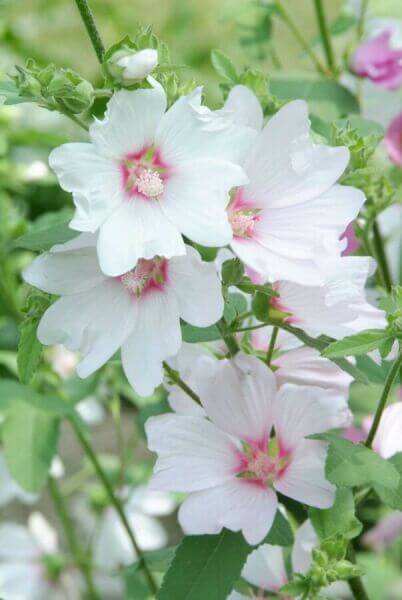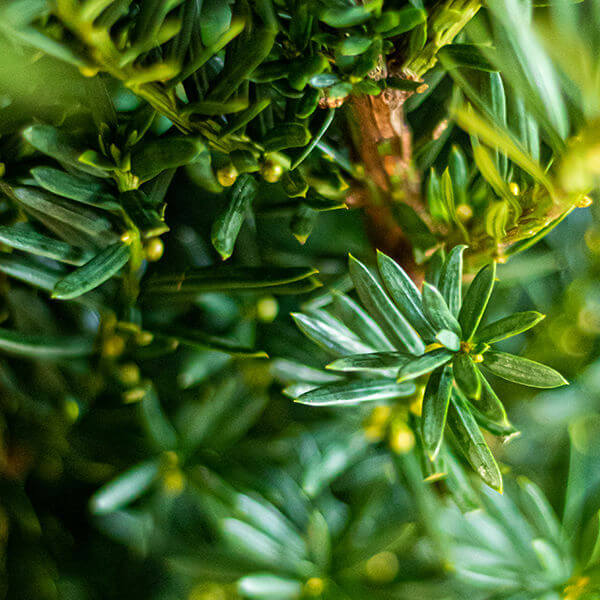Best Hedging Plants For Modern Gardens
Best Hedging Plants For Modern Gardens
Blog Article
Hedge Plants For Backyards
Boost your garden's attraction with lush hedge ranges such as Yew (Taxus), Thuja, Laurel, Photinia, and Bamboo, celebrated for their structural integrity and ecological advantages.
Yew and Thuja provide evergreen protection and winter strength, while Laurel provides quick growth and broad, aromatic leaves.
Photinia adds seasonal appeal with its lively red foliage, and Bamboo provides a low-maintenance, serene atmosphere.
These hedges enhance air quality, reduce noise, and develop tranquil, personal spaces.
Appropriate planting, spacing, and upkeep ensure vigorous growth and eco-friendly harmony.
Explore how these rich ranges can raise your garden's beauty and well-being.
Secret Takeaways
Change Your Garden With Lush Hedge Ranges
- Select Yew for its dense, evergreen growth and unequaled durability.
- Select Laurel for its quick development and broad leaves, ensuring fast personal privacy.
- Choose Photinia for its lively seasonal foliage, which turns a striking dark red.
- Use Bamboo for a low-maintenance, winter-hardy hedge with visual appeal.
- Area plants 2-3 per meter and prune regularly for optimal growth and health.
Popular Hedge Plants
When transforming a garden with rich hedge varieties, it's important to think about popular hedge plants such as Yew, Thuja, Laurel, and Photinia due to their special attributes and advantages.
Yew (Taxus) is extremely respected for its durability and thick, green development, making it a prime choice for withstanding landscapes.
Thuja is noted for its evergreen foliage and robust winter durability.
Photinia adds seasonal vibrancy with red leaves that darken in time, creating dynamic visual appeal.
Laurel uses quick development and aromatic, broad leaves, suitable for quick privacy.
In Addition, Bamboo is an exceptional option for atmosphere, providing a low-maintenance, winter-hardy option that enhances the garden's visual with its sophisticated, swaying walking sticks.
These choices cater to a range of horticultural requirements and preferences.
Benefits of Garden Hedges
Garden hedges offer a multitude of advantages, making them a valuable addition to any landscape. These natural barriers are cost-effective to carry out and supply considerable wind protection, boosting air flow and contributing to noise decrease. The thick foliage of hedges like Thuja and Beech ensures personal privacy by obstructing visibility, creating a remote and peaceful environment.
Hedges also play an important role in microclimate guideline, supplying a steady environment that cultivates plant growth and reduces temperature fluctuations. Their complex leaf structures filter pollutants, improving air quality and contributing to a much healthier garden community.
Moreover, hedges stand out in noise reduction, absorbing and deflecting acoustic waves to lower ambient sound levels. This dual performance of providing both visual and acoustic privacy boosts the general harmony and aesthetic appeal of any garden.
Planting and Maintenance Tips
For an effective hedge, meticulous preparation of the planting area is vital. Ensure the soil has appropriate pH and drain to support strong root development.
Space the plants properly for the picked types. Water the hedge frequently during its preliminary development stage, adjusting as needed with seasonal modifications.
Carry out a systematic pest control and disease avoidance method, utilizing natural or chemical treatments when required. Routinely examine for aphids, termites, and fungal infections.
Apply mulch to retain moisture and suppress weeds. Seasonal pruning promotes dense development and air flow, necessary for plant health.
Following these standards will assist you cultivate a vibrant, well-kept hedge that improves the charm of your garden.
Spacing and Cutting Standards
Spacing and Cutting Guidelines
Appropriate spacing and trimming are important for cultivating healthy, visually appealing hedges. Adequate spacing guarantees each plant gets enough nutrients, light, and airflow.
Follow these guidelines for optimal hedge upkeep:
- Spacing: Position hedge plants 2-3 plants per meter to motivate robust development.
- Pruning Methods: Routine pruning is necessary for preserving wanted hedge height and shape. Trim new growth in summer and cut back older wood during winter.
- Seasonal Care: Adjust trimming methods and schedules according to seasonal requirements to guarantee plant health.
- Hedge Height: Frequently monitor and trim to maintain the desired hedge height and attain consistent looks.
Abiding by these steps will ensure your hedge thrives, boosting both the appeal and performance of your garden.
Selecting the Right Hedge
Choosing the Right Hedge
Selecting the proper hedge involves evaluating aspects such as mature height, foliage density, and ecological strength. Successful hedge plant selection requires understanding each species' development qualities and site-specific adaptability.
For instance, Yew (Taxus) offers exceptional longevity and thick growth, while Thuja is notable for its winter season resilience. In addition, considering upkeep requirements is essential; fast-growing types like Laurel or Privet need routine trimming, whereas low-maintenance options like Bamboo or Ivy might be preferable for those looking for very little upkeep.
Ecological factors such as soil type, light schedule, and moisture conditions ought to likewise guide the selection procedure. This cautious technique ensures the selected hedges will thrive, offering both visual and functional advantages to the garden landscape.
Delivery and Planting Recommendations
To ensure your hedge plants grow, they should be delivered by specialized carriers and planted immediately upon arrival.
Follow these vital actions for effective planting:
- Soil Preparation: Enrich the soil with raw material to enhance drain and nutrient material.
- Planting Depth: Develop a trench two times the width and equivalent to the depth of the root ball.
- Watering Strategies: Water completely after planting, keeping the soil consistently moist however not saturated.
- Mulching: Apply a layer of mulch to maintain wetness and reduce weeds.
Client Support and Service
Given the vital role of timely support in horticultural pursuits, our customer assistance team is available 6 days a week through telephone, email, and social media to use professional guidance and swiftly attend to any concerns. Their devotion to quick action times guarantees consumer complete satisfaction by resolving questions related to plant health, optimum planting methods, and maintenance schedules.

Reaction Time
----------------------
This thorough assistance system, strengthened by a stellar 9.3/ 10 consumer score, highlights our commitment to enhancing the gardening experience for every customer.
Frequently Asked Concerns
How Long Does It Consider Hedge Plants to Establish?
Hedge plants usually require one to 3 years to become totally established, with the precise duration differing by species and growing conditions.
Efficient care during this vital duration is important for robust development. Consistent watering, watchful weed control, and proper fertilizer application are pivotal in promoting strong root advancement.
For instance, fast-growing species like Laurel may develop faster, while slower-growing varieties such as Yew may take longer. Thorough upkeep accelerates the facility procedure, leading to healthy and thick hedges.
What Are the very best Hedge Plants for Privacy?
The question of the finest hedge plants for personal privacy includes evaluating evergreen and deciduous choices.
Evergreen hedges like Thuja, Laurel, and Cypress offer year-round protection, making sure continuous privacy.
In contrast, deciduous hedges such as Beech use seasonal privacy, shedding leaves in chillier months.
Secret upkeep tips for personal privacy hedges consist of routine cutting, fertilizing in spring, and correct spacing-- typically 2 to 3 plants per meter.
Additionally, consistent watering and diligent weed removal are crucial for promoting healthy, dense development.
Can Hedge Plants Attract Wildlife to My Garden?
Yes, hedge plants can bring in wildlife to your garden by supplying necessary advantages like shelter, food, and nesting websites, consequently improving local biodiversity. Yew, holly, and laurel are outstanding for drawing in birds, while ivy supports a variety of insects.
Nevertheless, it is essential to keep in mind that there are some disadvantages, such as increased maintenance to handle insects and regular maintenance. Thoroughly selecting and preserving hedge varieties can help balance these advantages and disadvantages, eventually promoting a vibrant and sustainable community in your garden.
Exist Any Blooming Hedge Plants Available?
Yes, there are flowering hedge plants available that can boost the charm of your garden.
For instance, Elaeagnus, also called Olive Willow, produces aromatic white flowers in the fall, adding a touch of beauty.
Photinia, another popular choice, showcases dynamic red leaves that grow into a rich green, creating a dynamic visual result throughout the seasons.
To ensure these plants prosper, it's vital to practice appropriate pruning strategies and seasonal maintenance, such as trimming brand-new development in the summer and cutting back in the winter season.
These procedures will assist maintain the health and aesthetic appeal of your flowering hedges.
How Do I Avoid Bugs in My Hedge Plants?
To avoid bugs in hedge plants, use natural pest control techniques and preserve correct hedge care. Present beneficial insects like ladybugs, which prey on hazardous insects, to produce a balanced community.
Routinely check your hedges for indications of problem and promptly remove any afflicted parts to avoid the spread. Make sure the health of your hedges by using well balanced fertilizers and offering sufficient water.
Utilize mulching to retain soil moisture and correct spacing to lower plant tension and promote robust development. These practices collectively help in minimizing pest concerns and preserving a healthy hedge.
Conclusion
In essence, selecting the right hedge ranges such as Yew, Thuja, and Laurel can change any garden into a peaceful haven. These plants supply year-round greenery, enhance visual appeal, and deal useful advantages like sound decrease and wind protection.
Proper planting methods, precise spacing, constant watering, and seasonal cutting are essential for optimal growth.
Trustworthy delivery services and expert client support make sure a seamless experience from purchase to planting, making it easier than ever to elevate your outside space.
Garden hedges use a wide variety of benefits, making them an important addition to Additional resources any landscape. These natural barriers are cost-effective to carry out and provide substantial wind protection, improving air circulation and contributing to noise decrease. The dense foliage of hedges like Thuja and Beech guarantees personal privacy by obstructing exposure, developing a peaceful and remote environment.

Pruning Strategies: Routine pruning is vital for preserving desired hedge height and shape. Trim brand-new development in summertime and cut back older wood during winter season.
Report this page